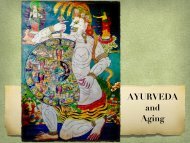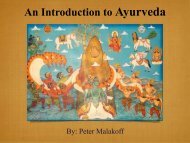The Man Who Built the Taj Mahal
The Mogul Emperor, Shah Jehan, ordered the building of what is known as the Taj Mahal, as a mausoleum for the memory of his favorite wife- Mumtaz Mahal. Constructed over a period of 22 years, from 1632-1654 with the daily labor of over 20,000 workers, to many people, this building erected on the shores of the Yamuna River in India is the most perfect and beautiful architectural structure in the world. Credit for the final plan is usually given to Ustad Isha, who is either Turkish or Persian, but there is some uncertainty about who really drew the plans. Here is the story of the man who designed the Taj Mahal . . .
The Mogul Emperor, Shah Jehan, ordered the building of what is known as the Taj Mahal, as a mausoleum for the memory of his favorite wife- Mumtaz Mahal.
Constructed over a period of 22 years, from 1632-1654 with the daily labor of over 20,000 workers, to many people, this building erected on the shores of the Yamuna River in India is the most perfect and beautiful architectural structure in the world.
Credit for the final plan is usually given to Ustad Isha, who is either Turkish or Persian, but there is some uncertainty about who really drew the plans.
Here is the story of the man who designed the Taj Mahal . . .
You also want an ePaper? Increase the reach of your titles
YUMPU automatically turns print PDFs into web optimized ePapers that Google loves.
An incredible story<br />
from <strong>the</strong> oral tradition of India<br />
about <strong>the</strong> man who designed<br />
<strong>the</strong><br />
<strong>Taj</strong> <strong>Mahal</strong><br />
<strong>The</strong> <strong>Man</strong> <strong>Who</strong> Created<br />
<strong>the</strong><br />
<strong>Taj</strong> <strong>Mahal</strong><br />
By: Peter Malakoff
<strong>The</strong> <strong>Man</strong> <strong>Who</strong> Created<br />
<strong>the</strong><br />
<strong>Taj</strong> <strong>Mahal</strong><br />
by: Peter Malakoff
<strong>The</strong> Mogul Emperor, Shah Jehan, ordered <strong>the</strong><br />
building of what is known as <strong>the</strong> <strong>Taj</strong> <strong>Mahal</strong>, as a<br />
mausoleum for <strong>the</strong> memory of his favorite wife-<br />
Mumtaz <strong>Mahal</strong>.<br />
Constructed over a period of 22 years, from<br />
1632-1654 with <strong>the</strong> daily labor of over 20,000<br />
workers, to many people, this building erected on <strong>the</strong><br />
shores of <strong>the</strong> Yamuna River in India is <strong>the</strong> most<br />
perfect and beautiful architectural structure in <strong>the</strong><br />
world.<br />
Credit for <strong>the</strong> final plan is usually given to Ustad<br />
Isha, who is ei<strong>the</strong>r Turkish or Persian, but <strong>the</strong>re is<br />
some uncertainty about who really drew <strong>the</strong> plans.<br />
Here is <strong>the</strong> story of <strong>the</strong> man who designed <strong>the</strong> <strong>Taj</strong><br />
<strong>Mahal</strong> . . .<br />
Ehvam<br />
Thus I have heard
For my mo<strong>the</strong>r<br />
who told me my first story<br />
and my fa<strong>the</strong>r<br />
who told me what it meant
Introduction<br />
<strong>The</strong> story told here is a true lie . . .<br />
In India folk tales ga<strong>the</strong>r round extraordinary events, places and<br />
people like insects attracted to light in <strong>the</strong> dark; especially if much<br />
time has passed, which it has in <strong>the</strong> oldest civilization in <strong>the</strong> world.<br />
<strong>The</strong>re are so many narratives about everything, it is impossible to<br />
know if what we hear is made up or really true.<br />
Still, <strong>the</strong> light of a story can be beautiful all by itself and it was <strong>the</strong><br />
radiance of this particular account, its truthfulness, not its verity, that<br />
attracted my attention and inspired me to write it down.<br />
In 2004 I spent <strong>the</strong> winter in Benaras, <strong>the</strong> oldest still-living city<br />
in <strong>the</strong> world. One evening as I walked along <strong>the</strong> stone ghats that<br />
run for miles along <strong>the</strong> Ganges, I fell into conversation with an<br />
aged sadhu who told me a story about <strong>the</strong> man who designed <strong>the</strong><br />
<strong>Taj</strong> <strong>Mahal</strong>. He described <strong>the</strong> incredible drama of how <strong>the</strong><br />
building was created and what lay at <strong>the</strong> root of its subtle and<br />
harmonious beauty.<br />
As far as I know, this legend exists only in <strong>the</strong> oral tradition of<br />
India and has never been written down before. It went something<br />
like this:
<strong>The</strong> <strong>Man</strong> <strong>Who</strong> Created <strong>the</strong> <strong>Taj</strong> <strong>Mahal</strong><br />
When Shah Jehan was at his height of his power and<br />
happiness, it was brought to his attention one day that<br />
<strong>the</strong>re existed in his kingdom a great architect, who was also<br />
an especially gifted artist and sculptor. A man who could<br />
create <strong>the</strong> exact likeness of a person merely from seeing<br />
<strong>the</strong>ir hands. It was said that from a moments study of a<br />
person’s hands this man could create <strong>the</strong>ir exact likeness of<br />
that person in stone.<br />
When Shah Jehan heard this, he immediately ordered<br />
<strong>the</strong> man to be brought before him. “Is this true? Can you<br />
really see and create <strong>the</strong> image of a person from <strong>the</strong> sight<br />
of <strong>the</strong>ir hands only?” <strong>the</strong> Shah asked. <br />
And <strong>the</strong> man who was very proud of his ability, replied,<br />
“This is indeed true O’ Shah. And <strong>the</strong>n he spoke to Shah<br />
Jehan, “Let all <strong>the</strong> unmarried woman of your court be<br />
brought forth in front of me, all toge<strong>the</strong>r. From <strong>the</strong>ir midst, I<br />
will select <strong>the</strong> most beautiful and carve her likeness in<br />
stone.<br />
“If I succeed in your eyes and in <strong>the</strong> eyes of <strong>the</strong> court<br />
in creating <strong>the</strong> perfect image of this woman with all her<br />
subtlety and manner, <strong>the</strong>n that woman shall be given to me<br />
as wife for reward. If I fail to create <strong>the</strong> perfect image,<br />
<strong>the</strong>n let me be killed.”
Shah Jehan was amazed at <strong>the</strong> boldness of <strong>the</strong><br />
sculptor and filled with excitement for his proposal. He<br />
immediately ordered it to be done.<br />
In <strong>the</strong> time of less than an hour, all <strong>the</strong> unmarried<br />
women of <strong>the</strong> court were assembled before <strong>the</strong> artisan,<br />
each one heavily veiled as was <strong>the</strong> custom of <strong>the</strong> day<br />
and all in anticipation. <strong>The</strong>y held out <strong>the</strong>ir hands for <strong>the</strong><br />
artisan to inspect as he walked slowly by.<br />
Now <strong>the</strong> Royal Princess, <strong>the</strong> daughter of Shah Jehan,<br />
had heard of <strong>the</strong> brave and incredible challenge of <strong>the</strong><br />
artisan and being greatly excited had inserted herself into<br />
<strong>the</strong> line of <strong>the</strong> assembled women. And, as fate would have<br />
it, it was in front of this most beautiful young girl that <strong>the</strong><br />
artisan stopped and said, “This is <strong>the</strong> woman I will<br />
sculpt in stone!” He had seen her perfectly in her hands<br />
and had fallen in love.
Immediately Shah Jehan was told that <strong>the</strong> woman <strong>the</strong><br />
artisan had chosen was his daughter! <strong>The</strong> Shah was<br />
highly concerned, but decided to do nothing<br />
immediately and instead sent spies to watch and note<br />
<strong>the</strong> progress of <strong>the</strong> artisan.<br />
<strong>The</strong> spies reported back to <strong>the</strong> Shah that indeed <strong>the</strong><br />
artisan was sculpting an exact likeness of Shah Jehan’s<br />
daughter. Again, spies were sent and again <strong>the</strong> news<br />
returned that <strong>the</strong> image in stone was without a doubt <strong>the</strong><br />
princess in all her beauty and glory.<br />
Finally, <strong>the</strong> image was completed and in front of <strong>the</strong><br />
whole assembled court, unveiled, with gasps of admiration<br />
and wonder at this man who could sculpt <strong>the</strong> every detail<br />
of a woman from looking only at her hand.
But Shah Jehan was deeply troubled. This daughter of<br />
his had been secretly promised to <strong>the</strong> general of his army.<br />
He could not give her to this poor artisan! Shah Jehan<br />
spoke: “I am most deeply impressed with your skill, your<br />
artistry and intuition. You have, indeed, created an exact<br />
and most beautiful image of this woman who happens to<br />
be my daughter. But you must take ano<strong>the</strong>r woman!”<br />
Shah Jehan exclaimed. “It cannot be with <strong>the</strong> Princess. She<br />
has been promised to ano<strong>the</strong>r man.”<br />
<strong>The</strong> whole assembly stood without breathing. All were<br />
deeply troubled. <strong>The</strong>ir ruler could not honor his promise.<br />
<strong>Man</strong>y among <strong>the</strong>m felt deeply embarrassed.<br />
But <strong>the</strong> artisan replied, “Great Shah, I have picked <strong>the</strong><br />
most beautiful candle from <strong>the</strong> tapers of your court. It is<br />
her flame that lights <strong>the</strong> lamp of my heart. It is her face<br />
that delights my eyes. It is in her delight that I revel. It is<br />
her and her alone. If you will not honor your promise,<br />
<strong>the</strong>n I have nothing to do but leave and wait upon <strong>the</strong> will<br />
of Allah.”<br />
Upon saying that, <strong>the</strong> artisan bowed and proudly<br />
walked from <strong>the</strong> assembled ga<strong>the</strong>ring.
Now many years passed and Shah Jehan grew older.<br />
It was <strong>the</strong>n that <strong>the</strong> tragedy of <strong>the</strong> death of his favorite<br />
wife, Mumtaz, eclipsed <strong>the</strong> bright sun of his life. His<br />
heart was broken.<br />
<strong>The</strong> horse of his love-desire grew wild with <strong>the</strong><br />
remembrance of his wife and <strong>the</strong> yearning to eternalize<br />
her presence in <strong>the</strong> most beautiful and perfect<br />
mausoleum came to fill his life. He became inflamed<br />
with that desire: to build a tomb for his wife to rest in, a<br />
grand celebration of Love in which he, himself, would be<br />
laid one day by her side.<br />
But who would design this building? <strong>Who</strong> could create<br />
in stone <strong>the</strong> feeling of his heart? And Shah Jehan’s thoughts<br />
went again to <strong>the</strong> artisan he had summoned many years<br />
before. That artisan had gone on as an architect to<br />
design many of <strong>the</strong> most beautiful mosques and<br />
buildings in <strong>the</strong> land and everywhere he was spoken of<br />
with admiration and praise. Surely, this was <strong>the</strong> man to<br />
take on this extraordinarily special and emotionally<br />
laden project.
Again, <strong>the</strong> Shah had <strong>the</strong> architect brought before him<br />
and spoke to him as follows: “Noble man,” he began,<br />
“In <strong>the</strong> name of Allah, please accept my pleas for<br />
your help in designing a mausoleum for my now<br />
deceased wife, Mumtaz <strong>Mahal</strong>, on whom <strong>the</strong>re may<br />
be peace. You were dishonored by me at our last<br />
meeting toge<strong>the</strong>r. I now wish to set that matter<br />
aright.”<br />
“My daughter, <strong>the</strong> very same one whose image you<br />
carved so exactly in stone, is still unmarried. My general,<br />
<strong>the</strong> man she had been promised to, was slain in battle. As<br />
a token of my sincere wish to have your services, accept<br />
my daughter in marriage. She is yours upon <strong>the</strong><br />
fulfillment of my proposal: Design <strong>the</strong> mausoleum for<br />
my now deceased wife, Mumtaz, on whom <strong>the</strong>re may be<br />
peace, and for myself.”
<strong>The</strong> architect was astounded, greatly pleased and highly<br />
honored all at <strong>the</strong> same time. Indeed, no one had ever seen <strong>the</strong><br />
Shah so emotionally in need before anyone. He exclaimed to<br />
<strong>the</strong> Shah, "Noble Ruler, Glory of Islam, I am honored to<br />
accept your gift and will immediately begin <strong>the</strong> design of <strong>the</strong><br />
mausoleum. By <strong>the</strong> grace of Allah it shall be done!"<br />
<strong>The</strong> architect was given a suite of rooms in <strong>the</strong> palace<br />
and in a state of great excitement, immediately began<br />
drawing up plans for <strong>the</strong> mausoleum. Within a few days, <strong>the</strong><br />
first plans were ready and brought before Shah Jehan.<br />
But he was not at all pleased. <strong>The</strong> feeling of <strong>the</strong> building<br />
was not right. Undaunted, <strong>the</strong> architect drafted yet more<br />
plans, this time of several buildings. His energy was great<br />
and shining, touched by <strong>the</strong> future promise of <strong>the</strong> princess<br />
as his bride.
And again, <strong>the</strong> plans were brought before <strong>the</strong> Shah and<br />
again <strong>the</strong>y were rejected. Several times more this process<br />
repeated itself and <strong>the</strong> architect began to fall into a mood of<br />
despair. He would never be able to have <strong>the</strong> princess as his<br />
bride unless <strong>the</strong> Shah accepted his plans and it seemed as if<br />
that would never happen.<br />
Now, one of <strong>the</strong> wisest aides to <strong>the</strong> Shah, approached him<br />
and offered a suggestion: “Oh noble Shah, please give your<br />
attention to my humble suggestion. By <strong>the</strong> grace of Allah, I<br />
have seen a way to attain your desires.”
“Presently, your architect is unable to produce a suitable<br />
plan because of his inability to feel what you feel and to<br />
taste what you now are now tasting. <strong>The</strong>re is a vastly<br />
different state of mind and emotion between you and your<br />
architect. You, my Lord, are in a state of grieving for your<br />
wife Mumtaz, on whom <strong>the</strong>re may be peace. <strong>The</strong><br />
architect is in a state of joyful anticipation, of seeing his<br />
future wife, your daughter, and of entering into <strong>the</strong> happy<br />
state of marriage.<br />
“I propose that this disparate state of emotions is at <strong>the</strong><br />
root of <strong>the</strong> lack of a suitable building plan for <strong>the</strong><br />
Mausoleum.”
Nawab Allami Sa'adullah Khan, Vizier e Azam of Shah
“And this is what I suggest be done: Let it be known to<br />
<strong>the</strong> architect that <strong>the</strong> princess is sick, indeed, let it be<br />
known that <strong>the</strong> princess is sick unto death. Bring this<br />
news to <strong>the</strong> ears of your architect. Let his heart be filled<br />
with grief and sorrow.<br />
“This will bring balance to his now expectant heart.<br />
This will allow <strong>the</strong> emotional state of <strong>the</strong> architect to<br />
taste in accord with your own.”
Shah Jehan was well pleased with <strong>the</strong> proposal and gave his<br />
Vizier full authority to do as had been suggested. And<br />
immediately, <strong>the</strong> Vizier, himself, went to <strong>the</strong> rooms of <strong>the</strong> architect<br />
and spoke as he had proposed.<br />
<strong>The</strong> architect was heart-rent by <strong>the</strong> news, he was saddened,<br />
shocked and humbled by <strong>the</strong> tragic sense of his life and life<br />
itself. So much beauty, so much sorrow, so much hope, so much<br />
despair. His heart broke open and tears ran freely from his<br />
eyes. He did not know whe<strong>the</strong>r he was crying in sadness or in<br />
ecstasy.<br />
All his life he had remembered <strong>the</strong> young woman whose<br />
hands he had seen, whose image he had re-created, whose<br />
heart he cherished. He must see her before she died.<br />
.
He threw himself into <strong>the</strong> plans with a broken heart.<br />
He worked in a frenzy of love. Tears fell upon <strong>the</strong> pages<br />
of <strong>the</strong> drawings and his heart coursed with feelings and<br />
his hands gave form to his feeling heart, and in this way<br />
<strong>the</strong> <strong>Taj</strong> <strong>Mahal</strong> was created.<br />
In <strong>the</strong> end, Shah Jehan received <strong>the</strong> plans for <strong>the</strong> most<br />
beautiful mausoleum in <strong>the</strong> world; <strong>the</strong> architect was<br />
joined in marriage to his beloved; and all of <strong>the</strong>m, now<br />
dead, live on in story and <strong>the</strong> building of <strong>the</strong> <strong>Taj</strong> <strong>Mahal</strong>.<br />
Ehvam<br />
‘Thus I have heard’
Shah Jehan wrote <strong>the</strong> following description<br />
of <strong>the</strong> <strong>Taj</strong> <strong>Mahal</strong>:<br />
“Should <strong>the</strong> guilty seek asylum here<br />
Like one pardoned, he becomes free from sin<br />
Should a sinner make his way to this exquisite building<br />
All his past sins will be washed away<br />
<strong>The</strong> sight of this palace creates sorrowing sighs<br />
And here, <strong>the</strong> sun and <strong>the</strong> moon shed tears from <strong>the</strong>ir<br />
eyes<br />
In this world this edifice has been made<br />
To display God's Glory”
As he grew older Shah Jehan chose his oldest son, Dara Shikoh,<br />
to succeed him as <strong>the</strong> Mughal emperor of India.<br />
His younger sons, also children of Mumtaz <strong>Mahal</strong>, <strong>the</strong> woman<br />
for whom <strong>the</strong> Shah had built <strong>the</strong> <strong>Taj</strong>, disputed <strong>the</strong> choice of<br />
<strong>the</strong>ir fa<strong>the</strong>r and went to war to seize <strong>the</strong> throne. Although Dara<br />
was supported by his fa<strong>the</strong>r, <strong>the</strong> second eldest son, Aurangzeb,<br />
defeated and killed his o<strong>the</strong>r bro<strong>the</strong>rs and imprisoned <strong>the</strong>ir<br />
fa<strong>the</strong>r at Agra Fort.<br />
<strong>The</strong>re, Shah Jehan spent <strong>the</strong> rest of his life as a prisoner,<br />
attended by his oldest daughter, Jehanarra. From his room at <strong>the</strong><br />
fort, off in <strong>the</strong> distance he could see <strong>the</strong> <strong>Taj</strong> <strong>Mahal</strong>, <strong>the</strong> resting<br />
place of his beloved wife, Mumtaz, and it is said that he died<br />
gazing at this monument of love, life. loss and God.<br />
After <strong>the</strong> death of Shah Jehan, Aurangzeb had his fa<strong>the</strong>r buried<br />
in <strong>the</strong> <strong>Taj</strong> <strong>Mahal</strong> alongside his beloved wife. <strong>The</strong>ir bodies lay
A Summary of <strong>the</strong> Story<br />
My Teacher, Adi Da Samraj, spoke about <strong>the</strong> <strong>Taj</strong> <strong>Mahal</strong>:<br />
“<strong>The</strong> message of <strong>the</strong> <strong>Taj</strong> <strong>Mahal</strong> is a message about<br />
Enlightenment, about <strong>the</strong> Enlightenment of <strong>the</strong> whole body.<br />
<strong>The</strong> <strong>Taj</strong> <strong>Mahal</strong> is a burial place, but its message is Life. <strong>The</strong><br />
secret of Enlightenment is resurrection, <strong>the</strong> incarnation of love,<br />
and freedom from death.<br />
"<strong>The</strong> spiritual problem of Shah Jahan, <strong>the</strong> Mogul Emperor of<br />
India who built <strong>the</strong> <strong>Taj</strong> <strong>Mahal</strong> as a tomb for his favorite wife, is<br />
<strong>the</strong> mortality of <strong>the</strong> loved one. All <strong>the</strong> conditions for our ultimate<br />
Realization are present in <strong>the</strong> form of our relations, but <strong>the</strong>y are<br />
confounded by mortality. Having discovered that <strong>the</strong> loved one is<br />
mortal, you must commit yourself heroically to <strong>the</strong> service of his<br />
or her immortality. You can love what is dying, but you can only<br />
be in love with what is already Transcendental. <strong>The</strong> process of<br />
your loving is confounded until you overcome death, not<br />
philosophically, but bodily, through bodily and Transcendental<br />
Enlightenment.<br />
"<strong>The</strong> Enlightened man reveals his Enlightenment through<br />
bodily signs. Like <strong>the</strong> <strong>Taj</strong> <strong>Mahal</strong>, <strong>the</strong> body of <strong>the</strong> Enlightened<br />
man is a perfect balance between <strong>the</strong> descending and ascending<br />
forces of manifest existence.
“Photographs of <strong>the</strong> <strong>Taj</strong> <strong>Mahal</strong> generally do not convey this<br />
perfect balance, because <strong>the</strong>y confine <strong>the</strong> image within a<br />
frame. But when <strong>the</strong> <strong>Taj</strong> <strong>Mahal</strong> is viewed in <strong>the</strong> undefined<br />
space of which it is <strong>the</strong> center, it is one of <strong>the</strong> most perfectly<br />
balanced visual perceptions in <strong>the</strong> world. <strong>The</strong> two forces,<br />
descending and ascending, are perfectly equal.<br />
"<strong>The</strong> <strong>Taj</strong> <strong>Mahal</strong> is a description of <strong>the</strong> whole body. <strong>The</strong> body<br />
in its Enlightenment, <strong>the</strong> body when it is beautiful in Truth, is<br />
a perfect balance between what descends and what ascends.<br />
When <strong>the</strong>re is too much attention to what is descended and<br />
only physical, or too much attention to what is ascended and<br />
only psychic, such imbalance yields mortality and delusion.<br />
Only <strong>the</strong> harmony is immortal, and conducive to<br />
Illumination. In our Enlightenment we represent that<br />
Illumined harmony in our physical form, like <strong>the</strong> <strong>Taj</strong> <strong>Mahal</strong>.”<br />
This description of <strong>the</strong> <strong>Taj</strong> <strong>Mahal</strong> is mirrored in <strong>the</strong> story you have<br />
just read. When <strong>the</strong> artisan displayed his powers at <strong>the</strong> court of Shah<br />
Jehan, he demonstrated an insight into <strong>the</strong> subtle relationship<br />
between all things. <strong>The</strong> artisan ‘read’ <strong>the</strong> hands of a maiden in <strong>the</strong><br />
Shah’s court and to <strong>the</strong> amazement of all, duplicated in stone <strong>the</strong> face<br />
and body of <strong>the</strong> person he has seen from seeing only her hands.<br />
According to <strong>the</strong> agreement <strong>the</strong> artisan made with <strong>the</strong> Shah, he<br />
would be given <strong>the</strong> hand of any maiden he had chosen from <strong>the</strong>
court even though he had chosen <strong>the</strong> woman when <strong>the</strong>y were all<br />
veiled. But, even though <strong>the</strong> artisan accomplished what he had<br />
promised, <strong>the</strong> Shah was unable to fulfill his end of <strong>the</strong> bargain for <strong>the</strong><br />
artisan had chosen <strong>the</strong> Shah’s daughter who had secretly inserted<br />
herself into to assembly of veiled maidens . . . <strong>the</strong> Shah had already<br />
promised his daughter in marriage to ano<strong>the</strong>r man; <strong>the</strong> general of his<br />
army.<br />
<strong>The</strong> artisan is unwilling to accept any substitute for he had fallen in<br />
love with <strong>the</strong> maiden whose hands he had seen and and whose body<br />
and mind had become clear to him. <strong>The</strong> first part of <strong>the</strong> story closes<br />
as he leaves <strong>the</strong> court of <strong>the</strong> Shah, to ‘wait upon <strong>the</strong> will of Allah.’<br />
Several years pass and <strong>the</strong> beloved wife of <strong>the</strong> Shah, Mumtaz<br />
<strong>Mahal</strong>, passed away. In mourning for his beloved partner, Shah<br />
Jehan conceived an idea to build <strong>the</strong> most magnificent mausoleum<br />
in <strong>the</strong> world for Mumtaz. He wanted to create in stone a perfect<br />
symbol of <strong>the</strong>ir love. Inquiries were sent throughout <strong>the</strong> kingdom<br />
for an architect who had <strong>the</strong> subtlety and sensitivity to create such<br />
a monument and <strong>the</strong> name of a particular person came up again<br />
and again; it was <strong>the</strong> very same artisan who had come to his court<br />
many years ago and had carved <strong>the</strong> likeness of Jehanara Begum,<br />
<strong>the</strong> Shah’s own daughter, in stone.<br />
After he left <strong>the</strong> Shah that fateful day, this artisan had gone on to<br />
demonstrate his wonderful abilities in <strong>the</strong> creation of architectural<br />
masterpieces all over Mughal India.
With his subtle abilities and gifted senses, he had been able to feel<br />
deeply into what was needed for this or that building and translate<br />
that feeling into plans that guided <strong>the</strong> creation of many<br />
extraordinary buildings. So, once again, Shah Jehan sent for him<br />
to come before <strong>the</strong> court.<br />
<strong>The</strong> Shah had rudely disappointed <strong>the</strong> artisan before, but he<br />
thought he could find a way that might work in <strong>the</strong> present; <strong>the</strong><br />
Shah knew that <strong>the</strong> artisan was unmarried and by <strong>the</strong> will of<br />
Allah, <strong>the</strong> Shah’s daughter had remained unmarried as well; her<br />
husband-to-be, <strong>the</strong> general, had been slain in battle.<br />
When <strong>the</strong> artisan appeared in court, <strong>the</strong> Shah offered his sincere<br />
apologies for what had occurred several years before when he did<br />
not fulfill his promise and proposed to set <strong>the</strong> matter aright . . . <strong>the</strong><br />
artisan was offered his daughter in marriage if he would<br />
satisfactorily complete <strong>the</strong> plans for <strong>the</strong> mausoleum. Thrilled with<br />
this offer appearing out of <strong>the</strong> mists of his life like a dream, <strong>the</strong><br />
artisan enthusiastically accepted.<br />
<strong>The</strong> story tells us he was given a suite of rooms at <strong>the</strong> palace and<br />
set to work with great anticipation of <strong>the</strong> woman who was to be<br />
his life partner. But at first, <strong>the</strong> plans he created did not please <strong>the</strong><br />
Shah at all.<br />
<strong>The</strong> artistan was not accustomed to his plans being rejected. When<br />
he asked why his first submissions were not pleasing to <strong>the</strong> Shah, he<br />
was told <strong>the</strong>y were too grand and glorious or sad or cheerless and<br />
reminiscent of death.
In essence, <strong>the</strong> buildings were not balanced, and this is <strong>the</strong> ’balance’<br />
that Adi Da speaks of in his description of <strong>the</strong> <strong>Taj</strong> <strong>Mahal</strong>.<br />
"<strong>The</strong> <strong>Taj</strong> <strong>Mahal</strong> is a description of <strong>the</strong> whole body. <strong>The</strong><br />
body in its Enlightenment, <strong>the</strong> body when it is beautiful in<br />
Truth, is a perfect balance between what descends and<br />
what ascends. When <strong>the</strong>re is too much attention to what is<br />
descended and only physical, or too much attention to<br />
what is ascended and only<br />
psychic, such imbalance yields mortality and delusion.<br />
Only <strong>the</strong> harmony is immortal, and conducive to<br />
Illumination.”<br />
<strong>The</strong> artisan designed plans and <strong>the</strong>y were rejected by <strong>the</strong> Shah for<br />
quite a while. Finally, <strong>the</strong> wise Vizier of Shah Jehan offered an<br />
analysis of what was going on and what to do about it.<br />
<strong>The</strong> Vizier said that <strong>the</strong> artisan’s attention was much too colored by<br />
hope, loveliness and romance. <strong>The</strong> Shah had certainly experienced<br />
<strong>the</strong>se qualities, but he had also tasted <strong>the</strong> dead ends of his power,<br />
hope and aspiration; he had experienced aging, sickness, <strong>the</strong> strife<br />
between his sons and <strong>the</strong> inability to prevent <strong>the</strong> death of his<br />
beloved wife, Mumtaz. Because of <strong>the</strong>se experiences, <strong>the</strong> Shah felt<br />
deeper into life and <strong>the</strong> vision he desired in <strong>the</strong> Mausoleum was a<br />
combination of joy and sorrow, <strong>the</strong> height of love and aspiration<br />
and <strong>the</strong> depths of sorrow and despair.
Adi Da writes:<br />
“<strong>The</strong> <strong>Taj</strong> <strong>Mahal</strong> is a burial place, but its message is Life. <strong>The</strong><br />
secret of Enlightenment is resurrection, <strong>the</strong> incarnation of love,<br />
and freedom from death.”<br />
<strong>The</strong> Vizier suggested to <strong>the</strong> Shah that to bring balance to <strong>the</strong><br />
emotional state of <strong>the</strong> artisan, he would inform him that his<br />
daughter, <strong>the</strong> woman he is yearning for, is sick and might die.<br />
This will cause <strong>the</strong> artisans emotional, feeling-heart to resonate<br />
with <strong>the</strong> Shah’s.<br />
Recognizing what his Vizier says might be true and that this plan<br />
could yield <strong>the</strong> architectural vision he longs for, <strong>the</strong> Shah gives his<br />
permission for <strong>the</strong> Vizier to carry out his plan.<br />
Although <strong>the</strong> artisan could read in hands <strong>the</strong> image of <strong>the</strong> body and<br />
<strong>the</strong>n sculpt it in stone, he did not read what <strong>the</strong> Shah truly desired<br />
because he was caught up in his (<strong>the</strong> artisan’s) own emotions of<br />
union with his chosen beloved; and this is <strong>the</strong> principle of limitation<br />
in every individual . . . we are all so centered in our own ego that we<br />
fail to sense <strong>the</strong> Reality of Life or <strong>the</strong> feelings of o<strong>the</strong>rs. In this<br />
particular story, blindness is contrasted with an extraordinary<br />
knowledge of <strong>the</strong> subtleties of life, shown in <strong>the</strong> <strong>the</strong> ability of <strong>the</strong><br />
artisan to create <strong>the</strong> likeness of a woman through seeing only her<br />
hands. Although this subtle realm offers great gifts and wondrous<br />
abilities, it also has limitations that are not necessarily complete or<br />
balanced.
<strong>The</strong> Vizier delivered his message to <strong>the</strong> artisan and it produced a<br />
dramatic effect. <strong>The</strong> artisan was deeply affected, his heart broke<br />
open in acceptance of <strong>the</strong> inescapable opposites of love and death<br />
and he attained that rare balance of ‘Divine Harmony.’ In this state<br />
of mind and heart he created <strong>the</strong> plans for <strong>the</strong> <strong>Taj</strong> <strong>Mahal</strong>.<br />
This story is a picture of <strong>the</strong> understanding that needs to occur<br />
for such a balance to open <strong>the</strong> heart, be drawn in plans and<br />
incarnated in stone.<br />
This is <strong>the</strong> story of <strong>the</strong> man who created <strong>the</strong> <strong>Taj</strong> <strong>Mahal</strong>.<br />
Ehvam<br />
‘Thus I have heard’
Peter in Benaras on <strong>the</strong> ghats
•<br />
About <strong>the</strong> Author<br />
I am a religious studies scholar, poet, storyteller, Ayurvedic<br />
consultant, ghee maker, teacher and woodworker, living in <strong>the</strong><br />
foothills of <strong>the</strong> Himalayas.<br />
In 2011 I left <strong>the</strong> United States and came to live in India –<br />
whose ancient culture I had studied in school.<br />
All my life, I loved <strong>the</strong> stories of India, which offer up <strong>the</strong><br />
“Truths” of life in such profound, memorable and delightful<br />
ways.<br />
<strong>The</strong>se ancient tales carry <strong>the</strong> wisdom of <strong>the</strong> oldest still-living<br />
culture on earth. Impossible to fully understand and endless in<br />
<strong>the</strong>ir wisdom, <strong>the</strong>y are <strong>the</strong> vehicles that have brought <strong>the</strong><br />
teachings of this land to its generations for eons.<br />
I have been in India only a few years and already I am<br />
drowning in <strong>the</strong> abundance of songs one can hear of <strong>the</strong> great<br />
Beings who lived here and <strong>the</strong> stories <strong>the</strong>y have told.<br />
This, is but one of <strong>the</strong>m. . .<br />
Peter Malakoff
O<strong>the</strong>r Books, my Blog and Contact:<br />
My personal Website: Peter Malakoff<br />
I have written stories, poems, articles, recorded audio tales<br />
and movies for nearly forty years. You can find <strong>the</strong>m here:<br />
website: www.petermalakoff.com<br />
My Blog: India my Walden Pond<br />
Essays and stories on miscellaneous topics, composed since I<br />
came to India:<br />
India my Walden Pond<br />
Contact me:<br />
I would be happy to hear from you:<br />
email: petermalakoff@gmail.com
FINI


















